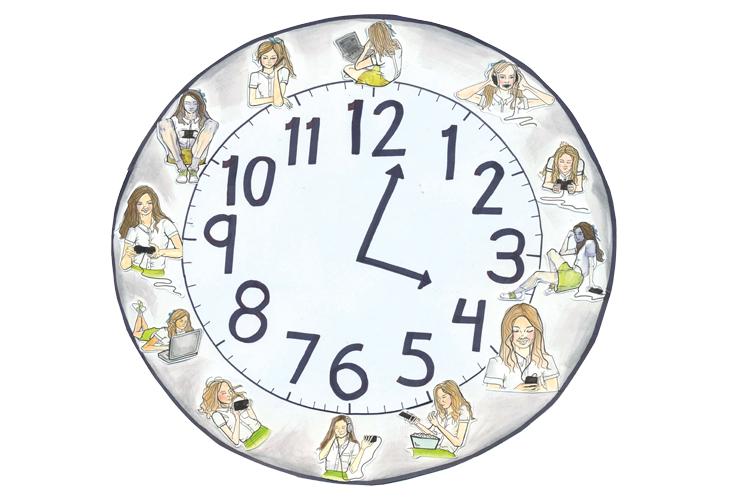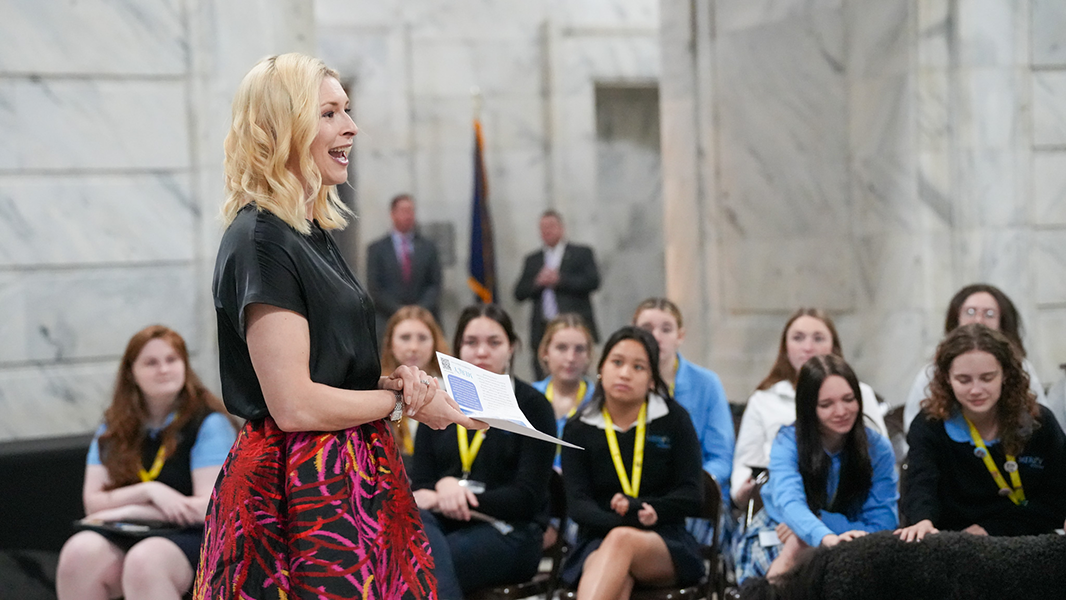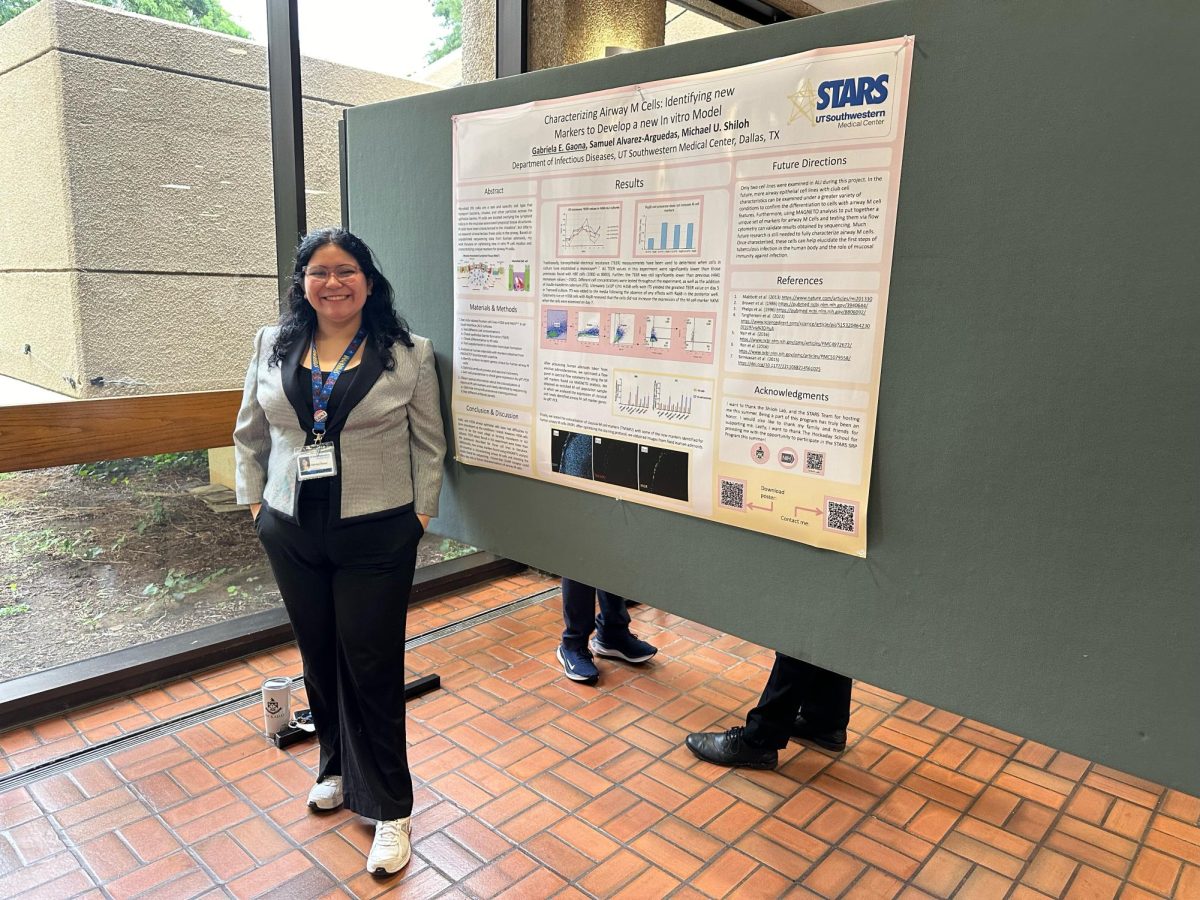Senior Julia Pasquinelli stands in the lunch line. Her friends are close by, smartphones in hand as they check social media and surf the web. Pasquinelli, unlike her friends, is not holding any electronic device. In November, she replaced her smartphone with a prepaid phone.
Pasquinelli’s decision to make this change stemmed from her belief that she used her phone too much. Now, she can only text and call with her AT&T Z432.
“It just bugs me. I don’t want to be doing it, but I don’t have the self-control to stop if it’s right there,” Pasquinelli said.
A study released in early November by Common Sense media, a company that offers family reviews and ratings regarding movies, television shows, video games and other forms of entertainment media, explored media usage by teenagers and children.
Common Sense Media characterizes “entertainment media” as video games, computer use, using smartphone apps, texting, social media, watching TV and listening to music.
The study, which surveyed 2,658 youths nationwide, found that teenagers aged 13-18 use entertainment media for an average of nine hours a day, more than the amount of sleep the average teenager gets (about seven hours).
On the other hand, preteens aged 8-12 spend about four and a half hours on entertainment media.
Michael Grizzard, assistant professor of communication at the University of Buffalo in New York, believes the greater freedom and autonomy teens have, compared to preteens, leads to this disparity.
“Tweens’ media diet is likely more restricted by parents and tweens may be less likely to have smartphones and other devices that could increase usage,” Grizzard said.
Although Pasquinelli has decreased her phone usage, her daily interactions, such as email, no longer center around her phone. Instead, they have transferred to her laptop.
Sophomore Bailey Brand admits to using her phone for “too long” as well. An avid user of Snapchat, Instagram, Facebook and Spotify, Brand uses her phone during lunch and when she gets home.
Recognizing the long periods of time she passes on her phone, Brand has developed a system to keep herself from overusing it. From 6 p.m. to 7 p.m., she will use it. Then, she will put it up for an hour and use it again from 8 p.m. to 10 p.m. In total, she estimates that she uses her phone for 6 to 7 hours each day. She uses it mainly for Snapchat.
“I honestly just feel inclined, whenever I get a Snapchat, to respond to it right away or something – not have people waiting,” Brand said. “But I guess that’s just really it.”
Grizzard, who has conducted social scientific studies on the psychological effects of entertainment media, is not surprised by how much teenagers use various forms of media. However, he found that usage decreases in college due to a healthier, non-mediate social life.
The use of media has a science behind it. According to Grizzard, teens use media for a variety of reasons.
“Some of the most important ones include socialization and relationship maintenance (e.g., through social media websites), relaxation (e.g., listening to music), competition (e.g., video game play) and simply to pass the time,” he said.
While some forms of entertainment media, such as social media, help teenagers stay in touch and enhance social ties, social media can have detrimental effects.
Grizzard said, “The anonymity provided by online behaviors can also foster negative behaviors such as cyberbullying.”
Another negative effect of entertainment media concerns the issue of distraction. According to Grizzard, the processing of tasks decreases in quality when attention is divided between more than one task.
“For example, imagine you’re trying to count some coins in a pile. It’s much harder to do that if you have a friend yelling various numbers at you while you are doing it,” Grizzard said.
Similarly, as students listen to music or do other activities while they are trying to study or doing homework, it proves to be more difficult to remember the material.
Furthermore, multitasking makes it difficult to encode the information students try to learn. Thus, students need to spend more time on a task for the same result.
Brand attests to this.
“It affects how I focus. Not really my schoolwork or my grades or anything, but just the amount of time it takes for me to get things done is longer than it should be,” she said.
As for Pasquinelli, she has seen a change in her daily interactions since she switched to a basic cell phone.
“If I’m at lunch or something, or waiting in the lunch line or just casually in places with my friends, I won’t be on my phone,” she said. “I will be sitting there ready to talk. Then the problem is they’re on their phones. I feel like I’m just more present.”







